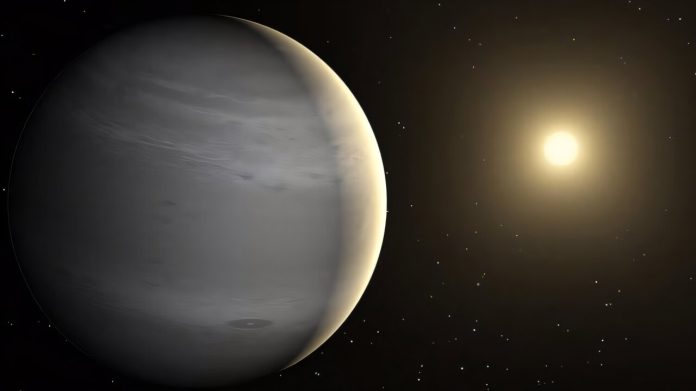
to the teamwork of scientists and everyday stargazers from around the world.
The planet, named TOI-4465 b, is a gas giant located about 400 light-years from Earth and is roughly 25% bigger than Jupiter.
It’s also nearly six times as heavy and about three times as dense, making it one of the rare large and heavy planets found in a moderate-temperature zone of space.
The discovery was made possible through NASA’s Transiting Exoplanet Survey Satellite, or TESS.
This space telescope watches for tiny dips in a star’s brightness, which may indicate a planet passing in front of it — a process called a “transit.” In this case, TOI-4465 b was spotted during just one transit.
But to prove it was a real planet and not a false signal, scientists needed to see at least one more transit.
That was a challenge because the planet only passes in front of its star once every 102 days, and each transit lasts around 12 hours. Finding a full night of clear skies at the right time and place to catch that rare event isn’t easy.
To solve this problem, researchers led by Dr. Zahra Essack from the University of New Mexico coordinated a global effort.
They worked with 24 citizen scientists from 10 different countries, along with professional astronomers and students. These dedicated volunteers used their own telescopes and clear night skies to observe the planet’s next transit, helping to gather vital data that would otherwise have been hard to get.
Dr. Essack said the discovery highlights how powerful citizen science can be.
With support from organizations like the TESS Follow-up Observing Program, the Unistellar Citizen Science Network, and the TESS Single Transit Planet Candidate Working Group, amateur and professional astronomers were able to join forces.
Unistellar’s standardized telescopes and data systems made it easier for citizen scientists to contribute high-quality observations, while the TESS groups helped organize and guide the global effort.
TOI-4465 b is especially interesting to scientists because it orbits farther from its star compared to many of the giant exoplanets we’ve found so far, such as the “hot Jupiters” that orbit very close. Long-period planets like TOI-4465 b are harder to find because they don’t transit their stars often, and they’re underrepresented in current planet databases. That makes each discovery of this kind extremely valuable for learning how planetary systems develop over time.
The planet also has a slightly oval-shaped orbit and a temperature range between 375 and 478 Kelvin (roughly 200–400°F), which is considered fairly cool for a gas giant.
Its size and moderate temperature make it a top candidate for future studies of its atmosphere, especially with advanced space telescopes like the James Webb Space Telescope.
This discovery is part of the Giant Outer Transiting Exoplanet Mass (GOT ’EM) survey, which focuses on tracking and studying long-period giant planets. The findings have been published in The Astronomical Journal, with Dr. Essack as the lead author and Professor Diana Dragomir as co-author.
In short, TOI-4465 b shows what’s possible when global teamwork and a passion for space come together—and it reminds us that discoveries in astronomy aren’t limited to scientists in labs. Sometimes, they start in the backyard, under the stars.
Source: University of New Mexico.



